Robert Oppenheimer, from Science and the Common Understanding:
“The open society, the unrestricted access to knowledge, the unplanned and uninhibited association of men for its furtherance — these are what may make a vast, complex, ever growing, ever changing, ever more specialized and expert technological world, nevertheless a world of human community.”
Science and the Common Understanding is a transcript of Oppenheimer’s six-part 1953 BBC Reith Lectures, and you can listen to the recording of Part 6, The Sciences and Man’s Community on the BBC website.
I came to this when looking for thinking to attach to my Obligation to Explain poster — this led me to reading about open society, which led me to Oppenheimer about whom, I’m ashamed to say, I otherwise knew very little.
Science and the Common Understanding is a fascinating read: it’s dense, and demands concentration, but it’s as eloquent a rumination on science and society as I’ve ever read. Here’s a passage from the sixth lecture — the one you can listen to at the BBC — where Oppenheimer talks about the “house of science”:
It is not arranged in a line nor a square nor a circle nor a pyramid, but with a wonderful randomness suggestive of unending growth and improvisation. Not many people live in the house, relatively speaking — perhaps if we count all its chambers and take residence requirements quite lightly, one tenth of one per cent, of all the people in this world probably, by any reasonable definition, far fewer. And even those who live here live elsewhere also, live in houses where the rooms are not labelled atomic theory or genetics or the internal constitution of the stars, but quite different names like power and production and evil and beauty and history and children and the word of God.
We go in and out; even the most assiduous of us is not bound to this vast structure. One thing we find throughout the house: there are no locks; there are no shut doors; wherever we go there are the signs and usually the words of welcome. It is an open house, open to all comers.
Brilliantly put. And also a fairly decent explanation about how many of us feel about technology, free software, and society. If you have a moment, I recommend you download the PDF of the entire series and read it.
Last week a big sign went up at the corner of Prince and Grafton in downtown Charlottetown advertising a new house project called Grafton Street Condominiums:
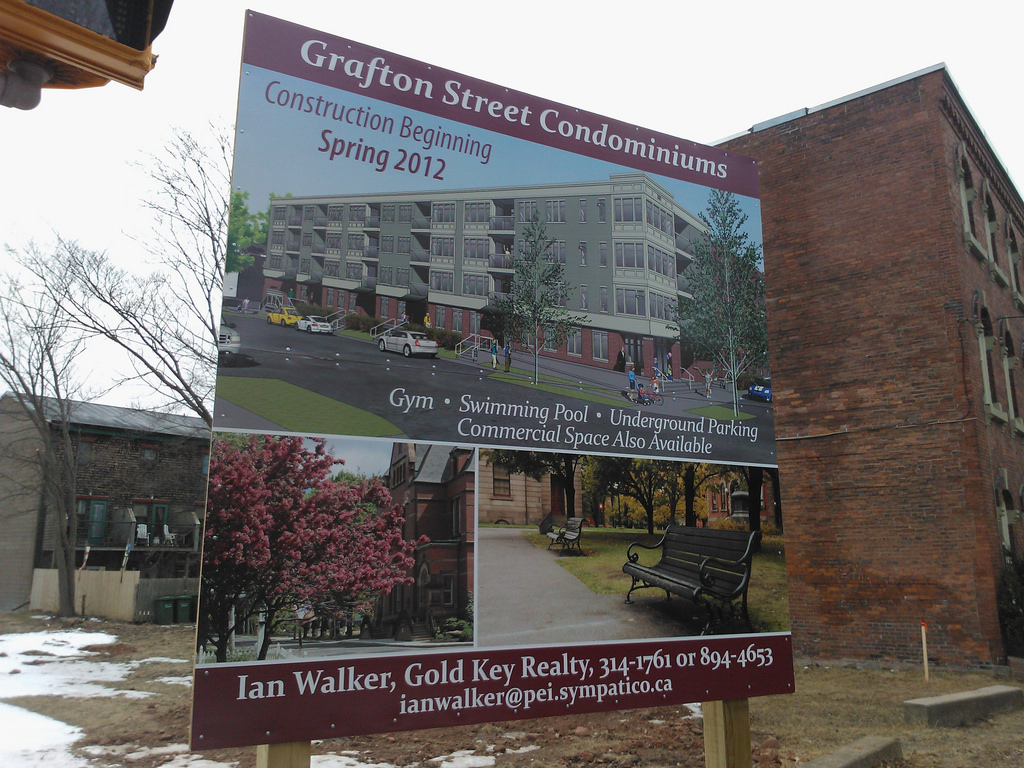
While the top photo is clearly of the new development itself, and the bottom-right photo is of Province House, I couldn’t place the photo in the bottom-left corner: I didn’t recall seeing a building like in downtown Charlottetown, and certainly not in the neighbourhood:
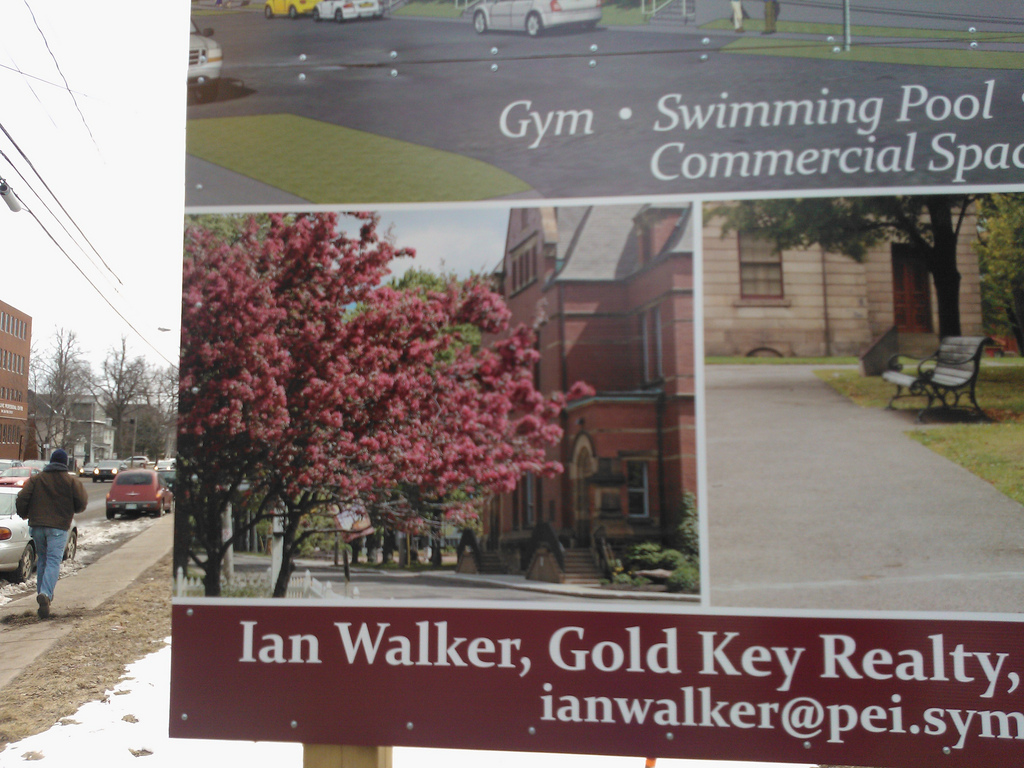
The building did, however, look like an Island building, and the streetscape had a PEI flavour to it, but looked more Summerside than Charlottetown. Sure enough, a quick tour of downtown Summerside on Google Street View showed that this, in fact, is a photo of Summerside City Hall:
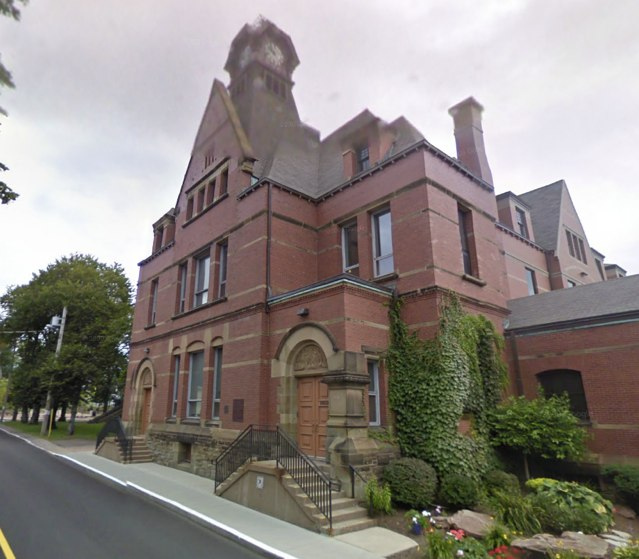
Nokia just released an Instagram-like app for Windows Phone called Creative Studio and I took it for a ride a few nights about down at Youngfolk and the Kettle Black, snapping and transforming a photo of Oliver. I really like the result:
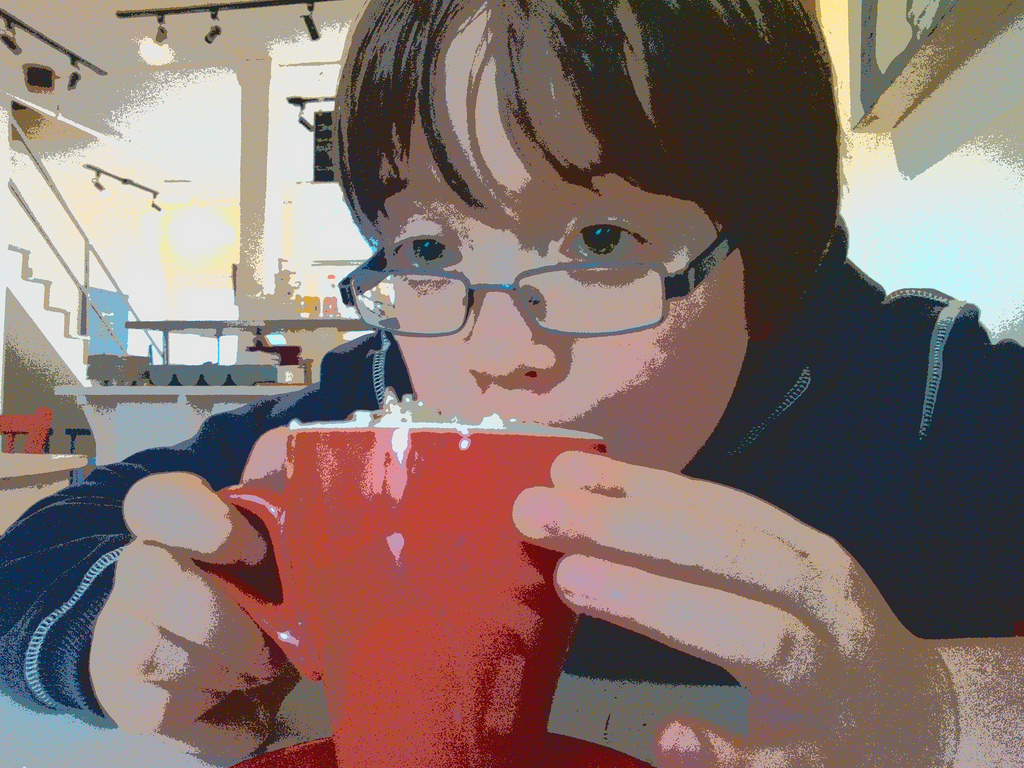
Since we moved into the Reinventorium earlier in the year, about a third of the office floorspace has remained littered with Bankers boxes filled with everything from old tax returns to metal type.
Fortunately our friends at Casa Mia Café came to the rescue, passing along a couple of retired IKEA Expedit shelving units that, whether by coincidence or design, happen to be the perfect size to fit the 13 inch square boxes.
So our chaotic office suddenly got a lot more neat and organized this morning:
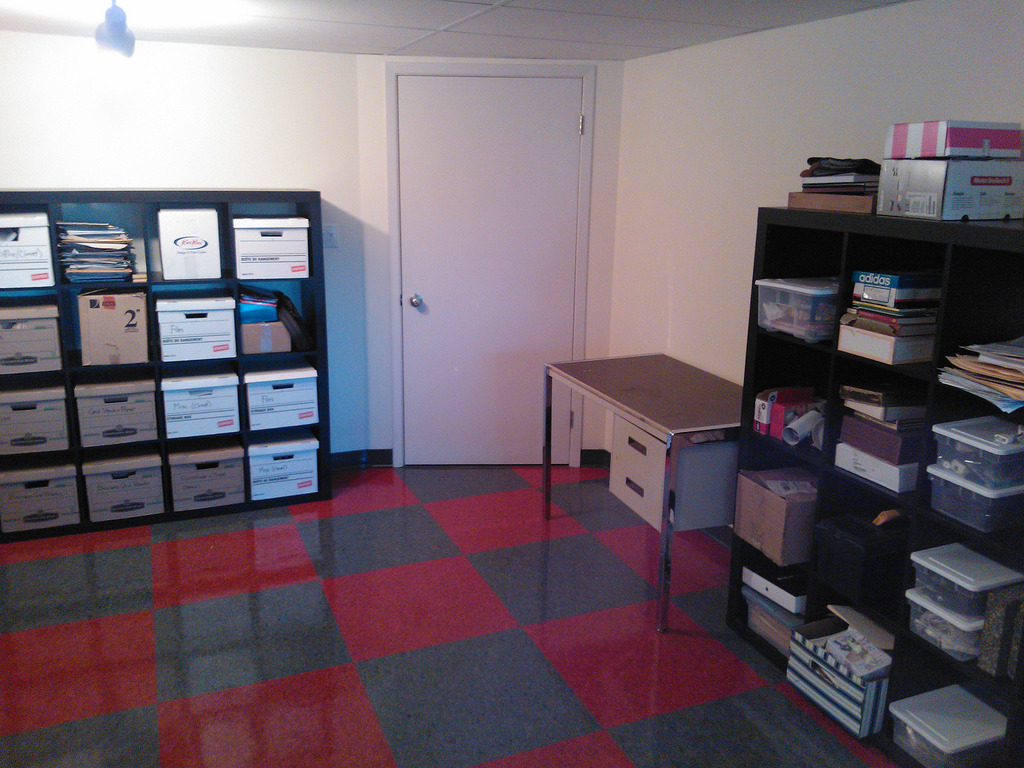
The Expedit system from IKEA is really rather ingenious: not only do they sell the shelves themselves, which are simple, elegant and flexible, but they also sell a whole host of accessories, from doors to drawers to baskets. And the maker community has a rather overwhelming collection of Expedit Hacks, from hamster home to wine rack to standup desk.
I was so inspired by the sudden sense of organization in the office that I celebrated by buying a house plant (on sale now at Hearts & Flowers on University Avenue: they have a great selection and are very giving with the house plant advice).
I had a good chat with Olle last night, on the horn from HQ in Sweden. We talked a lot about our work and our workplaces and our workmates.
We agreed that, among other things, silence is important to us in the work environment (when we first moved into the Reinventorium I was so concerned with the noise made by Johnny’s oldish MacBook that I bought him a MacBook Air; ironically a few weeks later we installed the humidifier which also emits noise, albeit in a consistent fashion, which is more palatable).
As The Guild wakes up from its wintertime sleep and theatre and music starts to fill the theatre and art starts to fill the gallery, I’m starting to realize that being surrounded by other creative people doing other creative things is important to my work environment too.
Earlier in the week, for example, I was in the basement firing up the letterpress when Nudie wandered in (he has a secret bunker buried deep underneath The Guild) and we had a chat about what I was up to and he asked whether I was up for music-poster-making (answer: yes, but with a limited typestyle selection…).
And today, on the other side of the wall from where I type, ACT is busy putting the finishing touches on the set, sound and lights for its staging of Relatively Speaking, which opens tomorrow night. In the last 36 hours they have turned the empty black box theatre into a home for their production. Lots of people doing lots of small creative and technical acts.
In the basement gallery, which I walk through to get to the letterpress shop, there’s a show on the wall from Suzanne O’Callaghan called Survivor: The he(art) of survivors of violence.
I appreciate all of this because I’m convinced that when there’s creativity in the air, it’s contagious: sit in 1 of 100 cubicles in an office park and you’ll catch infectious monotony; my theory is that if there’s art, music and theatre washing through your workplace every day there are opportunities abundant for both invisible and entirely practical synergies to result.
In light of all of this, I wonder if initiatives like the Atlantic Technology Centre, which purports to combine “form and function in its leading-edge space to create an atmosphere that promotes and sustains business achievement,” are wrong-headed.
The underlying assumption of such government-supported incubators is that if you colocate a bunch of geeks, hallway synergy will result — “hey, how about we take your municipal water billing application and merge it with our animation engine!” While I’m sure some of this actually happens within the walls of the ATC, perhaps a better tack would be to mashup IT companies not only with other IT companies, but to throw artists, musicians, craftspeople, cooks, philosophers, and longshoremen into the mix.
As Nick Paumgarten reports in last week’s New Yorker in an article on Davos:
I walked very slowly. I was new here, a first-timer. That Wednesday, I was eager to hear Merkel, but on my way I got sidetracked in the lounge by conversations that seemed interesting, especially the ones I wasn’t part of. It was a name-dropper’s paradise. Central bankers, industrial chiefs, hedge-fund titans, gloomy forecasters, astrophysicists, monks, rabbis, tech wizards, museum curators, university presidents, financial bloggers, virtuous heirs. I found myself in conversation with a newspaper columnist and an executive from McKinsey & Company, the management-consulting firm. This was serendipitous, as so many conversations in Davos turn out to be, because, at the urging of many, I was supposed to be angling for an invitation to the McKinsey party, at the Belvedere Hotel. A must, people said, with a glint. I was suspicious, owing to an incongruity between the words “party” and “management consulting.” But this was Davos. The executive cheerfully added me to the list. A McKinsey for a Merkel: a fair trade.
The Guild ain’t no Davos, but it’s got some of the same cross-pollinating potential for me, and I’d be interested in exploring whether this idea has broader application and interest. The key, whether Charlottetown or Davos, is to avoid workplace monoculture and architect for serendipity.
By the way, you should go and read Olle’s corporate elevator pitch — it’s not only simple and endearingly elegant, but it also describes, to a T, exactly what I know Olle is in the business of. My only clumsy attempts at same pale in comparison. “I don’t want to persuade you, I want to work with you to get to a solution.” I love it.
After printing the black yesterday, I moved on to the red today. The last step will be to set the explanatory type that will appear under “explain” and will, well, explain.
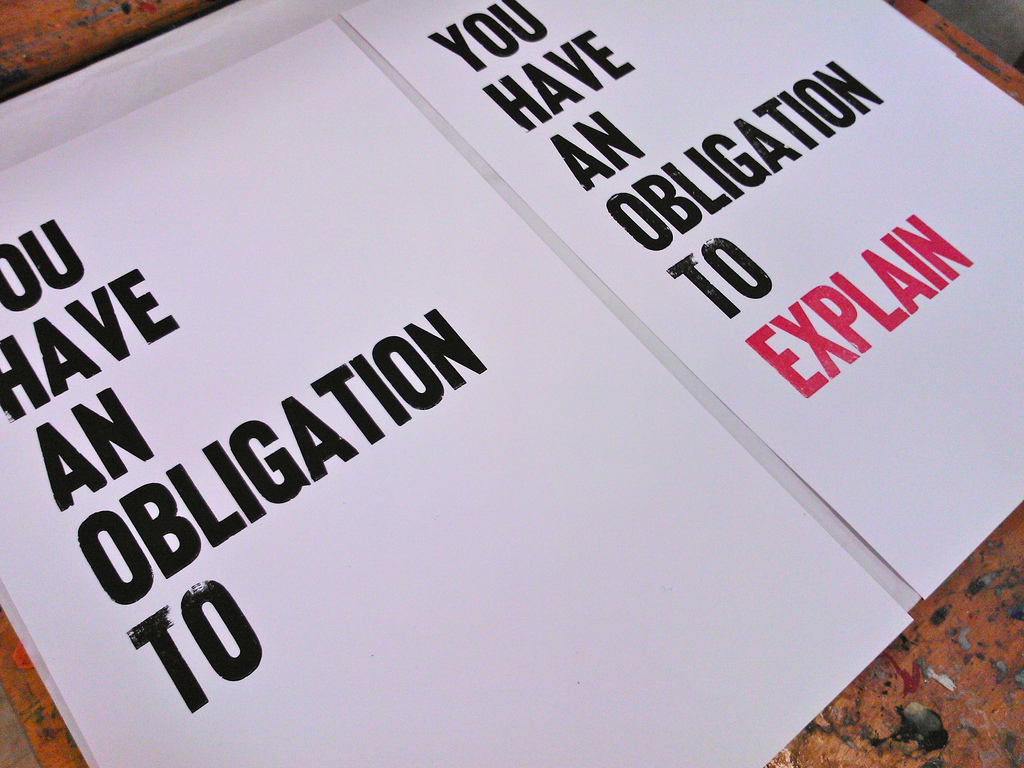
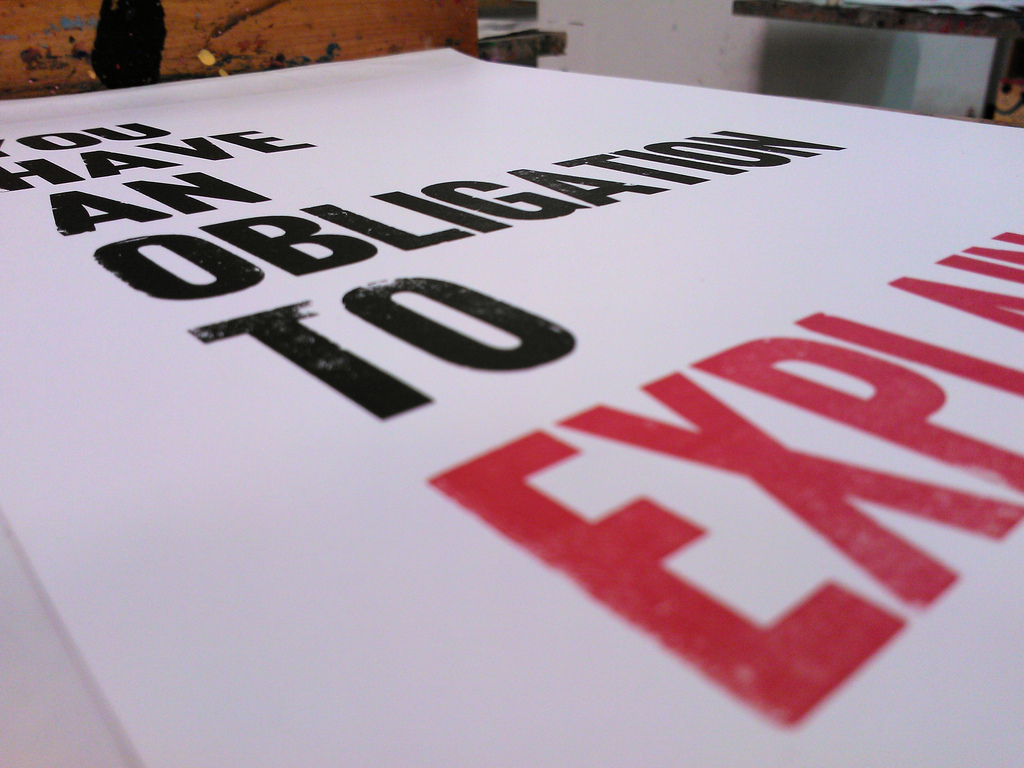
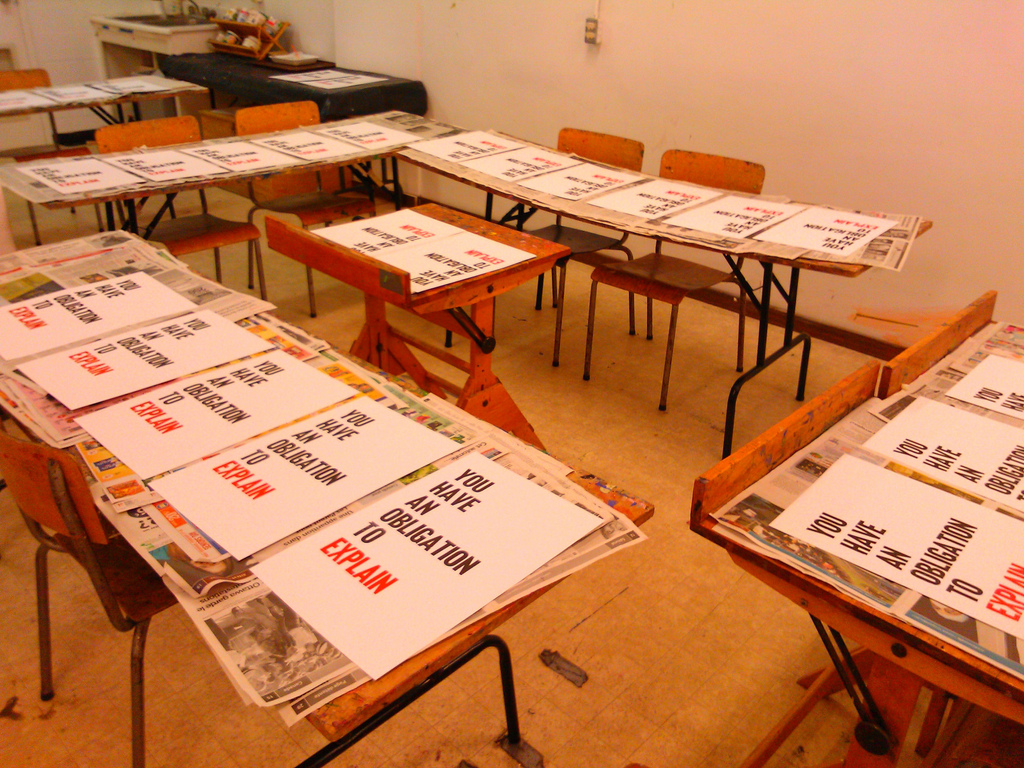
For a few weeks now I’ve been working on a poster “You Have An Obligation To Explain.” I’m still working on it — and, indeed, an explanation of what it actually means. In the meantime, I made good progress today in the letterpress shop.
Conditions were good for printing (temperature? humidity? karma? patience?) and I managed to print a complete set of the large black parts of the poster (“You Have An Obligation To”). Which meant a room full of obligations set out to dry:
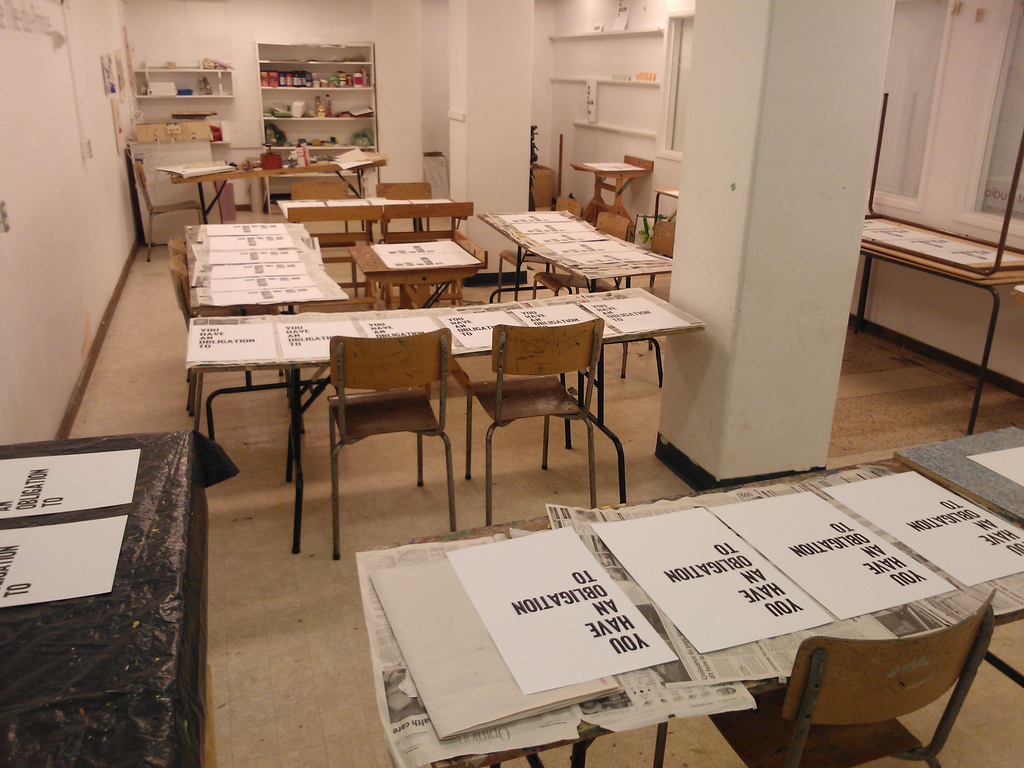
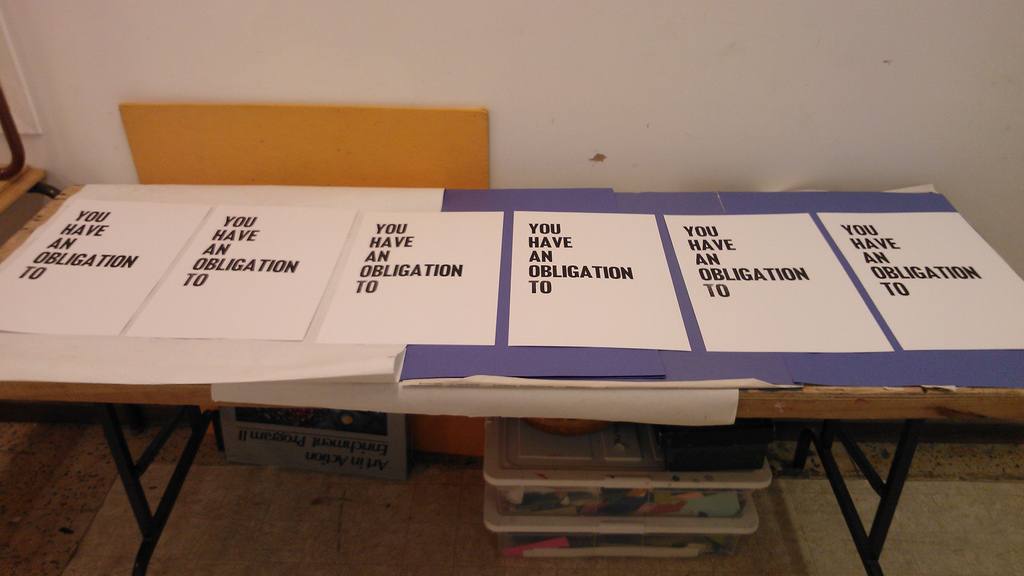
Next step is to print the red (“Explain”) and, possibly, the explanation itself.
We’re back from a week away in Florida spent with my parents in their condo on the beach near St. Petersburg. I never pictured myself a Florida-traveller, and it’s still not a suit of clothes that’s entirely comfortable, but a mid-winter break in warm climes well-equipped with waffles and iced tea has its attractions.
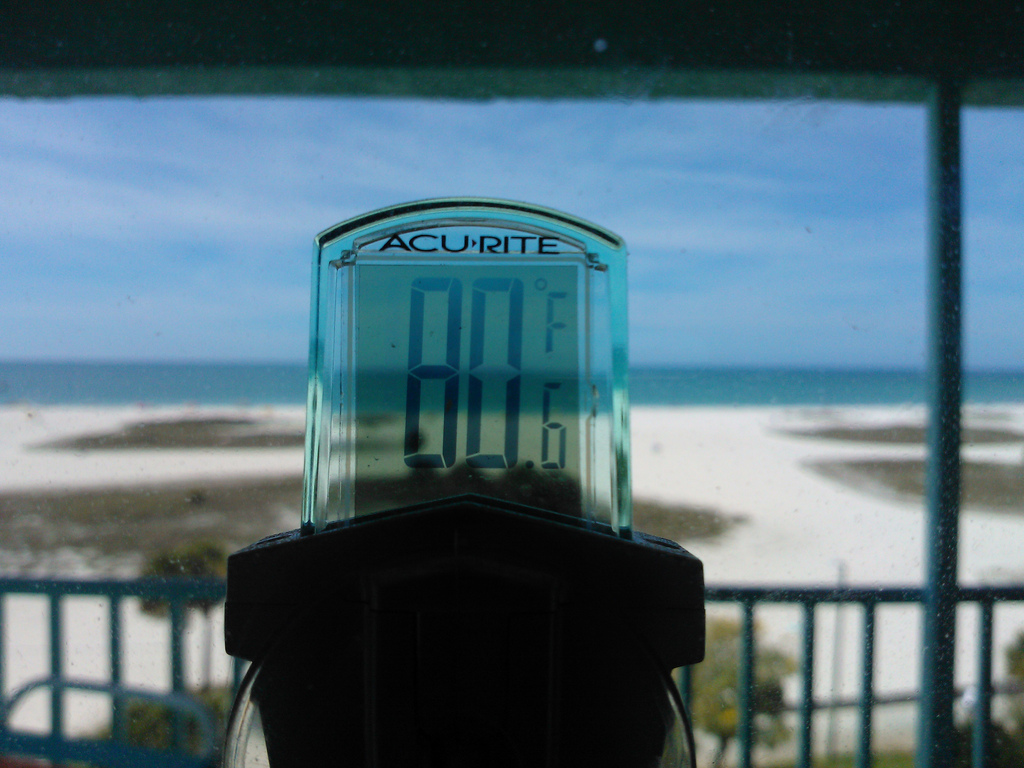
We flew down to Florida via United (it was originally a Continental reservation, but then, Continental became United just before we flew) from Halifax, which had the advantage of being cheaper ($1639 all-in for the 3 of us) and less labour-strife-stricken than Air Canada. We had a 2 hour stopover in Newark, New Jersey each way, which turned out to be rather pleasant due to excellent food court in Terminal C (hamburgers at Smashburger, coffee from Juan Valdez, juice from Jamba — all run-of-the-mill to Americans, but exotic for us).
Because we were arriving after midnight at Tampa International we took a limo to the condo, booked in advance from SuperShuttle ($65 one-way); our town car driver was at the bottom of the escalator when we arrived 30 minutes early, and was quick and friendly. The SuperShuttle website has a cool “where’s my car?” feature and my mother was able to follow along on her laptop as we neared the condo.
We spent out week in the sun doing all manner of things: we visited Winter the famous dolphin in Clearwater, the Museum of Science and Industry in Tampa and the Dali Museum in St. Petersburg (an unexpected treasure). We ate well, had fun scrounging for good coffee, swam in the pool, and enjoyed the company of my parents.
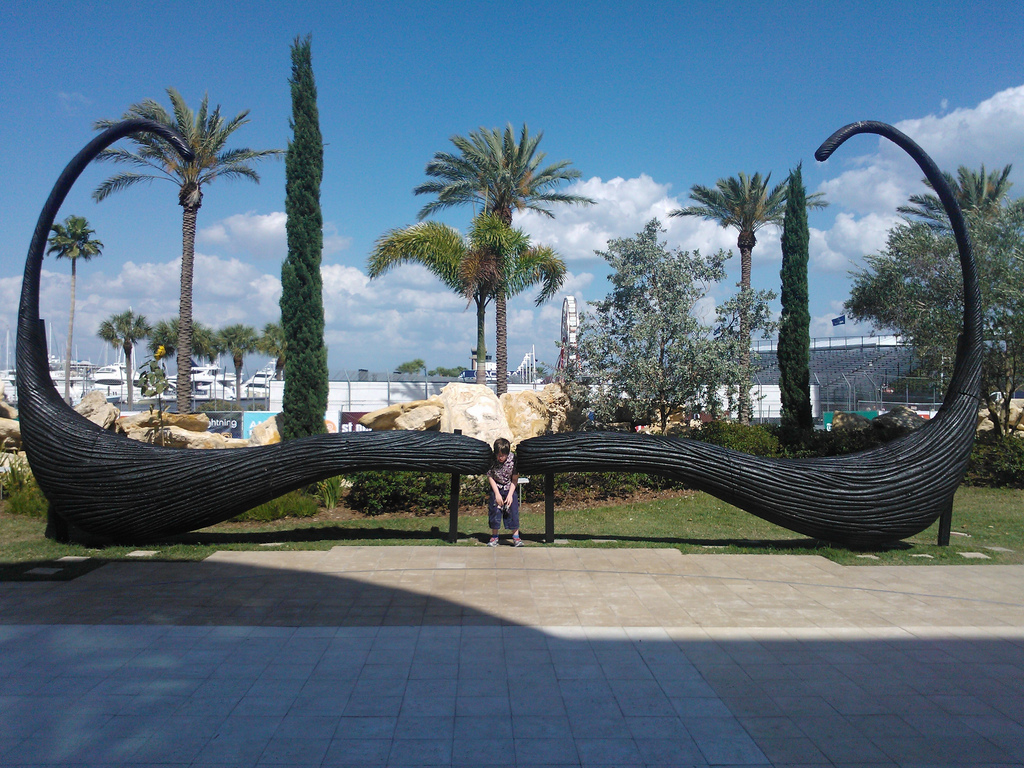
And then, suddenly, it was time to come home: we booked a van from SuperShuttle to arrive at 5:30 a.m. on Friday morning; our man was there at 5:15 and got us to the airport by 6:05 a.m., leaving us plenty of time to clear security, have breakfast and make our 8:00 a.m. flight.
The flight back had DirectTV service which was pricey at $7.99 per person for the flight, but I used the “do anything you possibly can, no matter the cost, to make flying less stressful” approach and so Oliver watched 2 hours of Phineas and Ferb while I watched Contagion (which, confusingly, switched to New Year’s Eve halfway through — why did everyone suddently get healthy?!).
After another meal in Newark Airport and a quick (albeit TV-less) flight to Halifax, we were in the car and headed home at 4:30, and pulled into our driveway in Charlottetown, after supper at Bella’s in Amherst, around 10:00 p.m.
We are nothing if not a science-museum-going family. We could have saved hundreds of dollars if we’d simply joined a science museum years ago and taken advanatage of reciprocal admittance policies, but we’re not that organized. In Florida last week our favourite museum was GWIZ in Sarasota, and our favourite part of GWIZ was the 90 minute introduction to robotics with LEGO Mindstorms, the end result of which was this:
This was my first experience with Mindstorms, and I found it all frightfully simpl, as did my mother and Oliver, my lab partners.
GWIZ is remarkable for something else as well: it has a well-outfitted FabLab that’s open to the community. Almost makes wintering in Sarasota seem like an attractive possibility.
From tbt, the free newspaper put out by the Tampa Bay Times, part of an article about a plan to force boats to slow down in areas of the ocean frequented by manatees:
Tea party members showed up at the hearing to picket the proposal. “We cannot elevate nature above people,” said Edna Mattos, leader of the Citrus County Tea Party Patriots. “That’s against the Bible and the Bill of Rights.”
The mind boggles.
 I am
I am